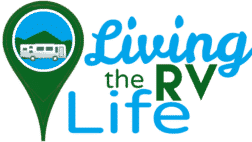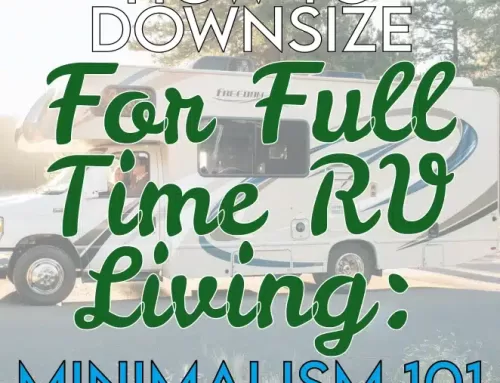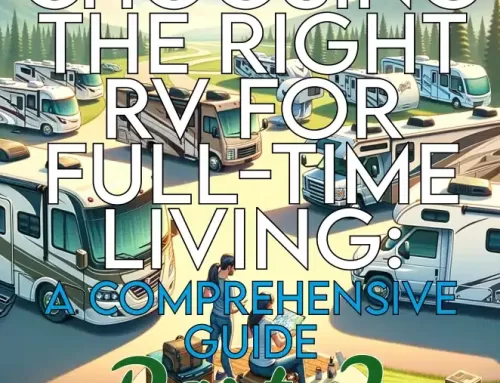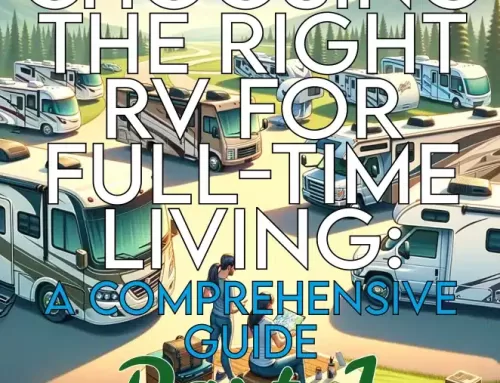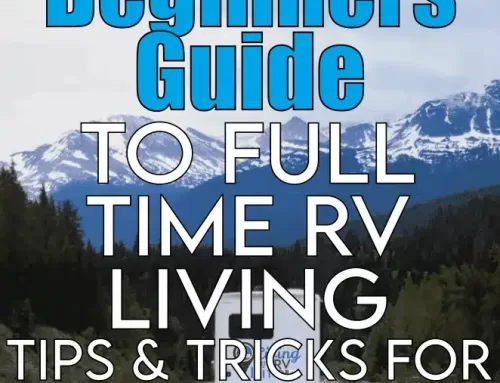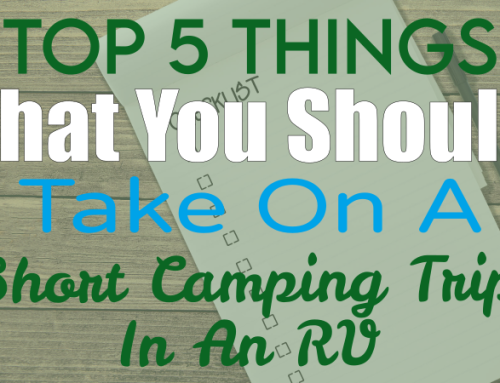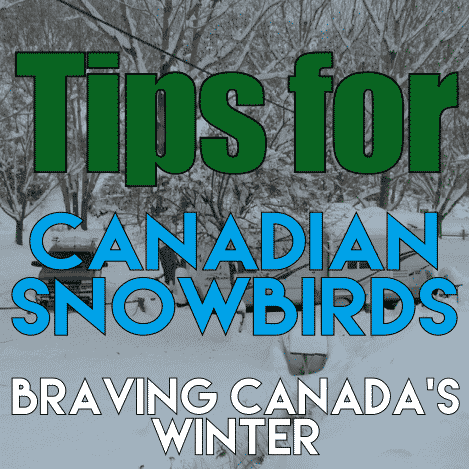 Editors Note: We originally published this article over a year ago when we knew the land border between the US and Canada would not be opening in time for snowbirds to head south for the winter. A year later and the border has just opened, but we know there are still many snowbirds who have decided to spend another winter in Canada for various reasons. For others, this could be their first winter in Canada in their RV. If this is you, then this article is for you.
Editors Note: We originally published this article over a year ago when we knew the land border between the US and Canada would not be opening in time for snowbirds to head south for the winter. A year later and the border has just opened, but we know there are still many snowbirds who have decided to spend another winter in Canada for various reasons. For others, this could be their first winter in Canada in their RV. If this is you, then this article is for you.
No matter what you decide – staying home for the winter, or heading for warmer climates, please be safe, careful and kind to others.
We are living in some strange times it seems. Covid has changed the globe. There is no disputing that. While most of us are merely inconvenienced by it, the fact is, our lives have changed.
Take Snowbirds. In the RV world, a snowbird is referred to as a Canadian citizen who leaves the cold and snow of Canada in favor of warmer climates in the US and Mexico. However, due to Covid-19, those snowbirds who drive south for the winter are finding that is impossible. The US Border with Canada is closed, and no one knows when it will open.
We are bringing this up now, because currently many snowbirds are trying to figure out what to do. Many who own homes will likely just stay home and tough it out. But what about those snowbirds, and others, who live full time in their RVs? What are they to do if they cannot head south for winter?
If you are a member of any of Facebook’s RV groups or watch any RV threads in Reddit or other social sites, you have already come across people asking this same question. And the answer for most, if not all, is to find as warm a place as possible in this great land of ours. That usually means southern BC and Vancouver Island for many.
We have been monitoring these posts and have found that many people who have to spend winter in their RV in Canada are doing just this – heading west for warmer climates. And if you were to call most RV parks that offer winter parking you will find many are already full for winter, or nearing capacity. In a normal year, at this time of year, many of these campgrounds would have a fraction of the full time RVers they do now.
What else is common in many of these threads is that the great majority of these people have never stayed in their RV through a Canadian winter and some are, to put it bluntly, freaking out. So, we present this article to those of you who are stressing about spending winter in Canada in your recreational vehicle.
Whether you plan on living in a truck camper, a Class A, B or C motorhome, fifth wheel or travel trailer, we are going to provide you with some of the information you will need. These are a few things we have learned about full time winter camping:
Preparing for Winter tip #1 – parking
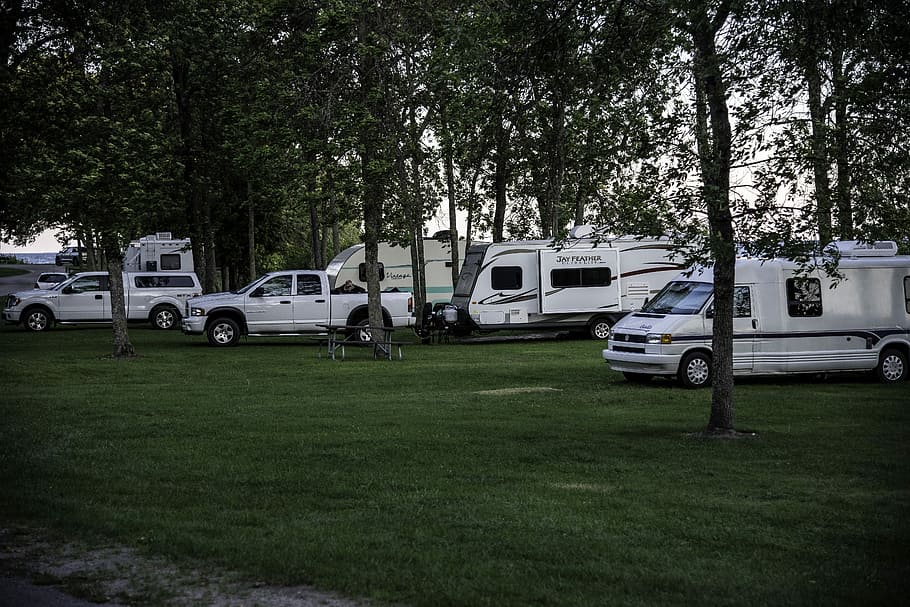
When determining how you are going to spend your winter, the first thing you need to figure out is where you are going to do it. Ideally you will park your RV somewhere that has full services (Power, water, sewer). That could be an RV park, or a friend’s or family’s place, or even a piece of property somewhere. Whatever the case we highly recommend that you have a location with full services. These services should also be properly installed to withstand winter. That means ensuring water lines are buried below the frost level, for example. We can tell you from experience that it is not fun to try and live in your RV without running water. We had about 6 weeks one winter without running water because the water supply line was not buried deep enough and froze.
And since we are talking about parking. If you have not already made arrangements, we suggest doing this now. Usually you can just pull up to the RV park you want to stay at and they will make room for you, but with the border closed and many snowbirds planning on wintering in their RV, those parks are filling up fast. Do not wait until it’s too late to find a place to park or you will find yourself having to park some place you maybe don’t want to.
Preparing for Winter tip #2 – insulating
Once you are parked, and you’ve ensured that everything will survive the winter (IE your water supply won’t freeze up like ours did) it’s time to prepare for winter. From our experience there’s a few things you’ll want to make sure of:
- You have lots of propane or a reliable supply of it. This could mean having a large tank brought to the property and arranging for a service to regularly fill it or having multiple portable tanks and a nearby service station where you can fill them.
- Alternative heat sources. Many people rely on their RV furnace. But what happens if it quits? Or you run out of propane one night? We recommend having some sort of backup heat source, such as electric heaters or even a diesel heater. For us, when we winter, we use electric heat as our primary source of heat, with the propane furnace as backup. We do it this way because our motorhome is winter rated. That means everything is exposed to heat in one form or another (IE water lines are not underneath where they can freeze). But keep in mind that your RV might not be. So, it’s best to weigh your options. You might find you MUST use your furnace more to keep your basement heated, for example, so that water lines and holding tanks do not freeze.
- Windows and vents let out a lot of heat. We found early on that the windows can let a lot of heat out. More so in our class A with that giant windshield. So, we would use heat shrink plastic on all windows, including the windshield. It may not look pretty but the energy savings will be huge. Similarly, roof vents can lose heat. However, we suggest perhaps foam or something else removable in case you need to use the vents. For example, you do not want to heat shrink plastic over the vent in your bathroom because you’ll need it to help remove humidity when you shower. If window plastic isn’t an option, perhaps heavy curtains. Anything to help reduce the heat lost through the windows.
- Skirting your RV will make a huge difference. We’ve used Reflectix to skirt our Motorhome, and we’ve also used 3-inch (7.5 cm) thick foam blocks, cut to fit. Both worked well, but we found the foam did a better job. Plus, it was easier to install and remove the foam blocks. However if you can’t get your hands on these, even a tarp wrapped tightly around your RV provides some additional help.
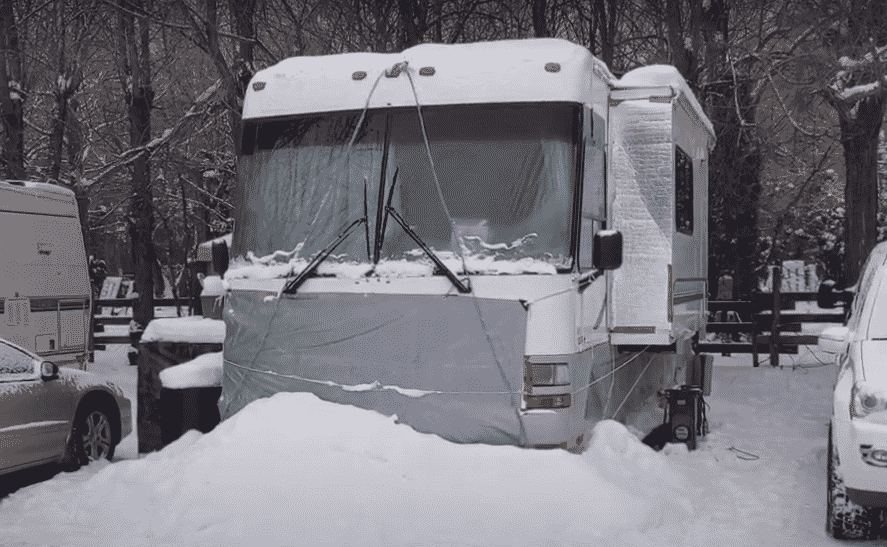
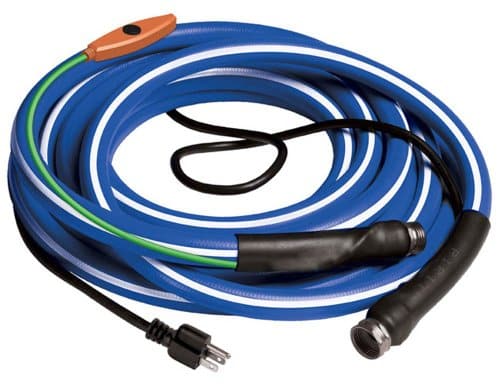 Heated water line. This is the hose from the water supply to your RV. You can buy or make one. We have made a few over the years. To make one is easy – you will need foam pipe wrap and a heat tape at least as long as your water hose. Also, some tin foil and electrical tape. Wrap your hose in tin foil, then tape the heat tape to it – do not wrap the heat tape around the hose. Just stretch it out along the hose. Be sure the temperature sensing end is near your water supply shutoff as this is where it will read the temperature from, in order to turn the heat tape on. It’s easiest to add the foam after taping a few feet of foil and heat tape to your hose. So, every 3 or 4 feet, stop and add the foam and tape it.
Heated water line. This is the hose from the water supply to your RV. You can buy or make one. We have made a few over the years. To make one is easy – you will need foam pipe wrap and a heat tape at least as long as your water hose. Also, some tin foil and electrical tape. Wrap your hose in tin foil, then tape the heat tape to it – do not wrap the heat tape around the hose. Just stretch it out along the hose. Be sure the temperature sensing end is near your water supply shutoff as this is where it will read the temperature from, in order to turn the heat tape on. It’s easiest to add the foam after taping a few feet of foil and heat tape to your hose. So, every 3 or 4 feet, stop and add the foam and tape it.- Insulate your sewer line. This is optional and may depend on your location. We have never insulated our sewer line, but one year we did make a “ramp” using a piece of rain gutter to help ensure the slope of the sewer line was maintained. That is because when it starts to snow, and build up, you might find your sewer hose develops sags which could lead to freezing. So be sure to keep your sewer line as straight (and sloped) as possible.
- Insulate your slides. This is also optional depending on your RV. Newer ones and ones with winter packages probably do not need their slides insulated. If you do insulate, just make it easy. A strip of reflectix on either side and optionally foam on the roof help. If you do use foam on the roof, be sure that if you have an awning over your slide that the foam does not damage it. The foam should slide easily under the awning. This will also help protect the awning as the snow that will inevitably come will not cause the awning to sag.
For more tips on what you can do to help get ready for winter, please read this article we published on the topic.
And for more information about Propane and winter camping please check out this article.
If you prepare correctly, you will be able to be comfortable living in your RV this winter. Just be mindful that it can get very cold. Even in the Okanagan Valley, where we spent the past couple winters, we had to deal with up to 2 meters of snow over a winter and some nights where the temperature fell to around and even below -20 Celsius. On those nights you will find yourself wearing extra layers and probably digging out a few extra blankets, but you will survive. We mention this at this time because we’re going to be experiencing another “la Nina” winter which, if you don’t normally pay attention, usually means colder temperatures with more snow in many places. That is the forecast for Western Canada for the 2020/21 winter.
And when winter is over and spring comes you’ll have some more tales you can tell everyone – how you survived the Canadian winter of 2020, all the while following the Covid-19 rules for RVing.
